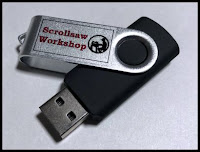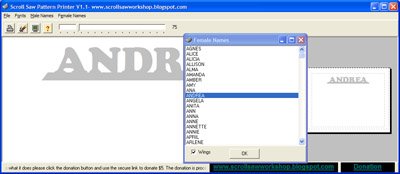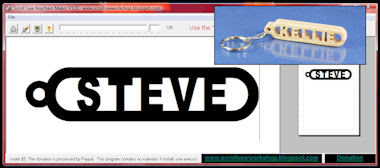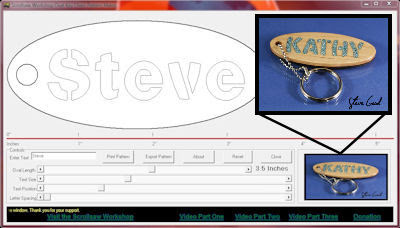Download the Pattern Below
Click to watch the video
10" X 8" Steam Locomotive pattern.
If you are a train enthusiast, you will enjoy the following video. It is under ten minutes. There is no narration, just beautiful scenery, old steam engines, and train whistles.
Wikipedia:
Steam locomotives were first developed in the United Kingdom during the early 19th century and used for railway transport until the middle of the 20th century. Richard Trevithick built the first steam locomotive in 1802. The first commercially successful steam locomotive was built in 1812–13 by John Blenkinsop,[1] the Salamanca (locomotive); the Locomotion No. 1, built by George Stephenson and his son Robert's company Robert Stephenson and Company, was the first steam locomotive to haul passengers on a public railway, the Stockton and Darlington Railway in 1825. In 1830 George Stephenson opened the first public inter-city railway, the Liverpool and Manchester Railway. Robert Stephenson and Company was the pre-eminent builder of steam locomotives in the first decades of steam for railways in the United Kingdom, the United States, and much of Europe.[2]
In the 20th century, Chief Mechanical Engineer of the London and North Eastern Railway (LNER) Nigel Gresley designed some of the most famous locomotives, including the Flying Scotsman, the first steam locomotive officially recorded over 100 mph in passenger service, and a LNER Class A4, 4468 Mallard, which still holds the record for being the fastest steam locomotive in the world (126 mph).[3]
From the early 1900s, steam locomotives were gradually superseded by electric and diesel locomotives, with railways fully converting to electric and diesel power beginning in the late 1930s. The majority of steam locomotives were retired from regular service by the 1980s, although several continue to run on tourist and heritage lines.
Scroll Saw Blade Tension is Important:
Blade tension is something that you learn from experience. There is no magic formula to set scroll saw blade tension. You will hear things like, "It should sound like a C note when plucked." or "The blade should not deflect more than 1/8" when the tension is correct."
Both of those statements are basically true but in all honesty, no one actually uses either technique after they try them a couple of times. They are just too error-prone and inexact.
The way you learn blade tension is by paying attention to what happens when you get tension right or wrong.
When the tension is too low the blade will wander away from the pattern line easily. You will have trouble controlling the cut. Especially on curves. If you are a new scroller, set the tension to where you think is correct. Scroll for a while. If you have trouble then it may be blade tension. Tighten the blade a bit more and try again. Eventually, you will get a feel for what works.
A poorly tensioned blade acts similar to a dull blade. Don't try to learn blade tension with a dull blade. Just don't use a dull blade when you are learning at all. Blades a cheap. Replace them often. A new scroller will confuse the two situations. This is another situation where you need to recognize you are having trouble and make a change. Try a new blade or adjust the tension. See what happens.
When you run a scroll saw with an improperly low-tensioned blade, the saw will sound different. You will hear a flutter in the sound. This is another situation where paying attention will pay off. Sometimes, as you are making a cut, the blade will slip slightly in the clamp. This lowers the tension of the blade. The first clue that this has happened is the sound.
You will hear people say that a scroll saw blade that has too much tension will break more often. I guess there may be some truth to that but I believe that is very rare. An over-tensioned blade will break more often but only if there is another issue also. When the blade is properly installed, the clamps are not damaged, or some alignment problem with the saw, then the blades can withstand lots of tension.
If you pull each end of a scroll saw blade exactly end to end it will withstand a lot of force. If you pull the same blade and twist it while you pull, it will not withstand as much force. This is one reason you see entry-level scroll saws break more blades. They are simply not manufactured to the same specifications. This often results in a blade that does not run true.
As with so many complex actions, experience is the best teacher. Experience will only teach you if you pay attention to what is happening. Don't just assume you know what is causing your problem. Make changes and see what happens.
That is a lot of words and most of you won't read to this point. I don't blame you. I wanted to ramble on a bit because it is a common problem. If you don't approach it analytically you can spend lots of time thinking you are a poor scroller when it is actually just a poorly tensioned blade.

$12 per sheet of 12 coins plus $3.50 shipping
Inlay with a 1" Forstner Bit.
The perfect way to sign your work.

Email Newsletter Readers: Remember that the Newsletter is just a copy of the daily blog post. To see the post in its proper formatting click this link. If you ever misplace a pattern or any item you see here you can always find it on the blog. Everything stays on the blog forever.
Every Scrollsaw Workshop Pattern from 2007-2020 on DVD
Purchase the entire Scrollsaw Workshop pattern catalog for offline access.
This DVD has over 3,310 patterns published from 2007 thru 2020.
The DVD is $20 plus shipping. Ships to 60 countries around the world.
The DVD is $20 plus shipping. Ships to 60 countries around the world.
If you use the DVD on a Windows PC there is a simple viewer program to browse through the patterns.
The DVD also works fine on a MAC. The viewer program is not MAC compatible but there is an included PDF with all the patterns shown as thumbnails for easy viewing.
All the same file but in an easy to use thumb drive. The USB thumb drive option is $23 plus shipping.
Now Available on USB Thumb Drive
Don't have a DVD drive on your new computer. No problem. Buy the catalog on a USB thumb drive.All the same file but in an easy to use thumb drive. The USB thumb drive option is $23 plus shipping.
My two "Wooden Vases on the Scroll Saw" books make it easy.
The books are $12 each and available for instant download after purchase. Click for Video Demonstration.
My Sponsors:
Support the businesses that support our community.
Home of Pegas scroll saw blades.
for you scroll saw ready boards.
Seyco features the Seyco ST-21 scroll saw
Make sure you check out the Seyco Scrollers Drill
Seyco features the Seyco ST-21 scroll saw
Make sure you check out the Seyco Scrollers Drill






































